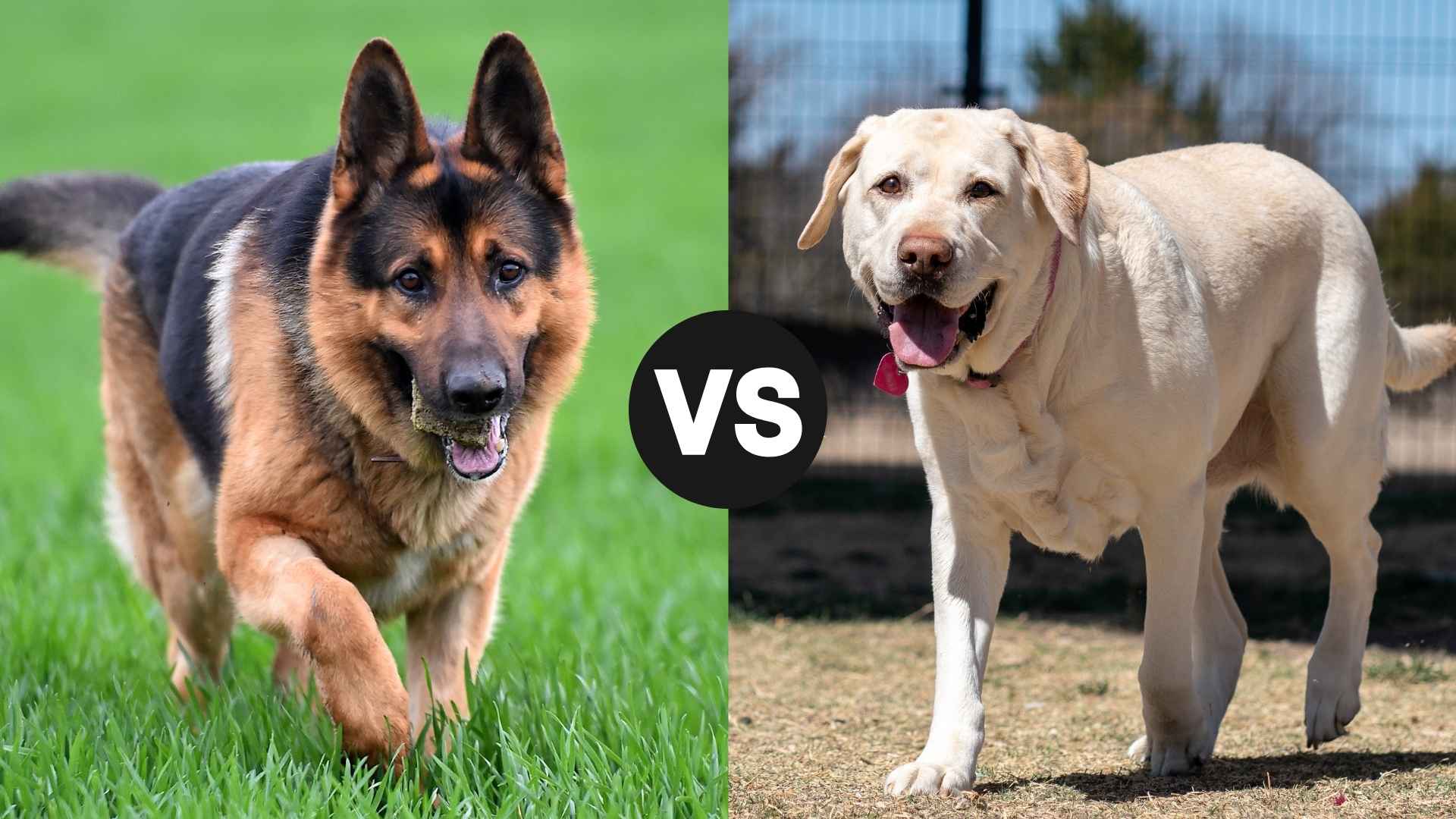German Shepherds and Labrador Retrievers are two of the most popular breeds of dogs in the dog world. They are not only extremely versatile but are also loved by the pet owners for their affectionate nature.
For homes with kids, they are great companions and exceptional guard dogs. Where the German Shepherd dog is super protective of its family members, the Lab is a funny and goofy companion who adds a lot of entertainment to your life.
While both the dogs are famous for their intelligence, strength, and herding abilities, there are some differences between the two. In this article, we shall talk about the major similarities and differences between Labrador and German Shepherd and discuss what makes them worth having as pets!
German Shepherd vs. Labrador Retriever
The German Shepherd has, obviously, a German origin and was bred in the late 19th century. On the other hand, the Labrador Retriever originated in Newfoundland and was refined in England later on. The main purpose of developing the GSD was to use it as a herding dog. Today, they successfully play a great role in police and military jobs as well.
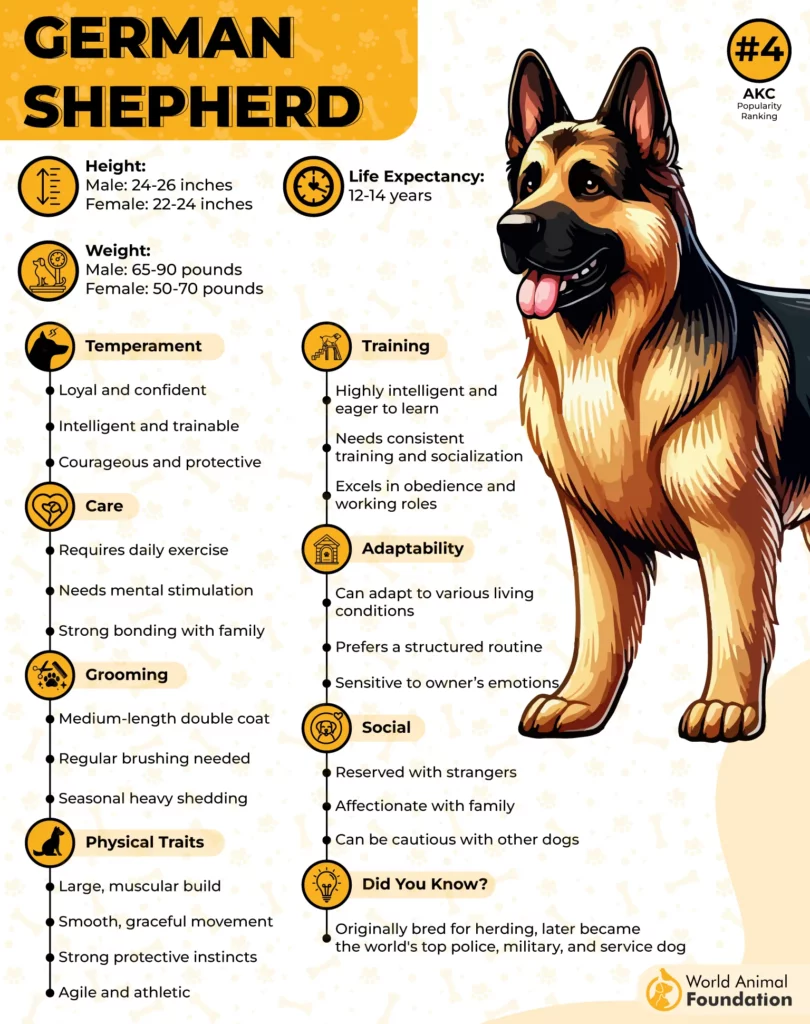
The Labrador Retriever was originally bred as a hunting companion for humans. Even today, it performs this role with great efficiency.
Size and Weight Differences
At first glance, you will think these two dogs are the same size. However, that’s not true. They differ in size. The German Shepherd has a height of around 24-26 inches, while it weighs around 65 – 90 lbs. It is tall in appearance and has an angular shape.
Comparatively, Britannica states the Labrador Retriever has a weight of around 65 – 80 lbs while its height is approximately 22.5 – 24.5 inches.
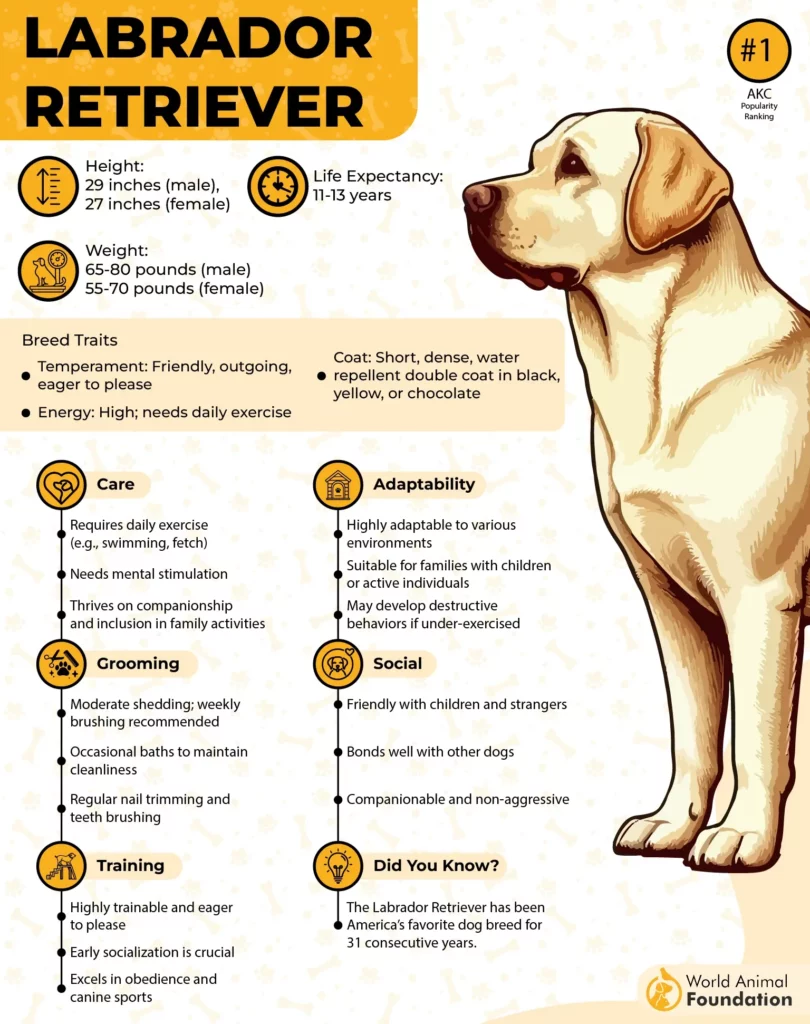
Where the GSDs appear taller when compared to the Labs, the latter are more compact in appearance and are much more stocky. However, in terms of their weight, they somewhat fall in a similar range.
Trainability and Intelligence Comparison
German Shepherds are highly intelligent dogs, as per PetMD. Naturally, they are also highly trainable. It will require you merely 3 to 9 months if you want to train your dog completely. Follow a pattern and start with obedience training.
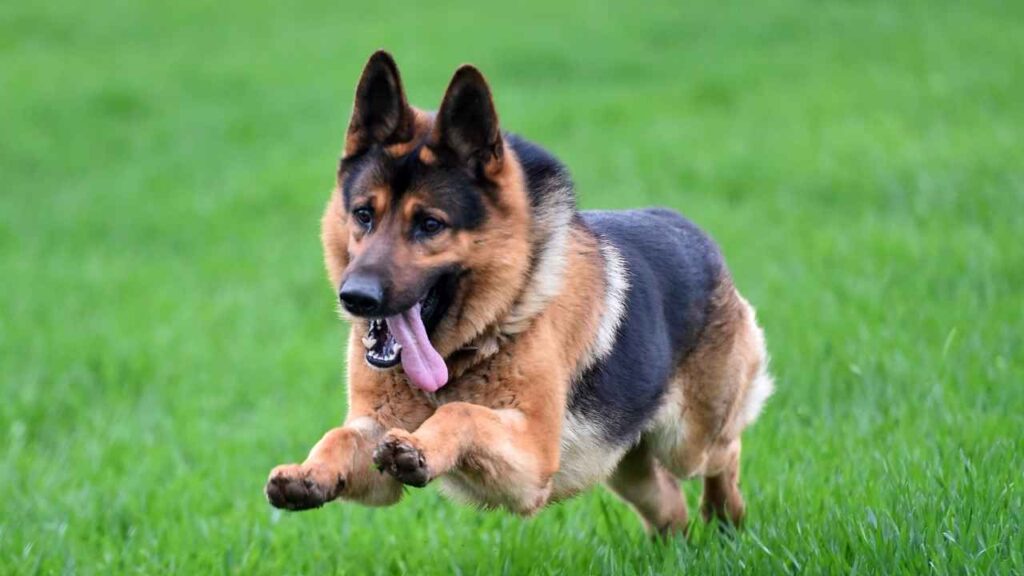
Next, you’ll have to move towards recall training and then opt for impulse control. Early training and socialization are necessary, specifically when the dog is 8-16 weeks old, which is a great time to start training. The German Shepherd puppy in its early years is the best student you’ll ever get to train!
Labs are highly motivated dogs. Their urge to learn makes them easy dogs to train. Start with socializing the puppies. Make sure to give them ample exercise each day. Alongside this, keep using positive reinforcement training methods to help this dog breed learn faster.
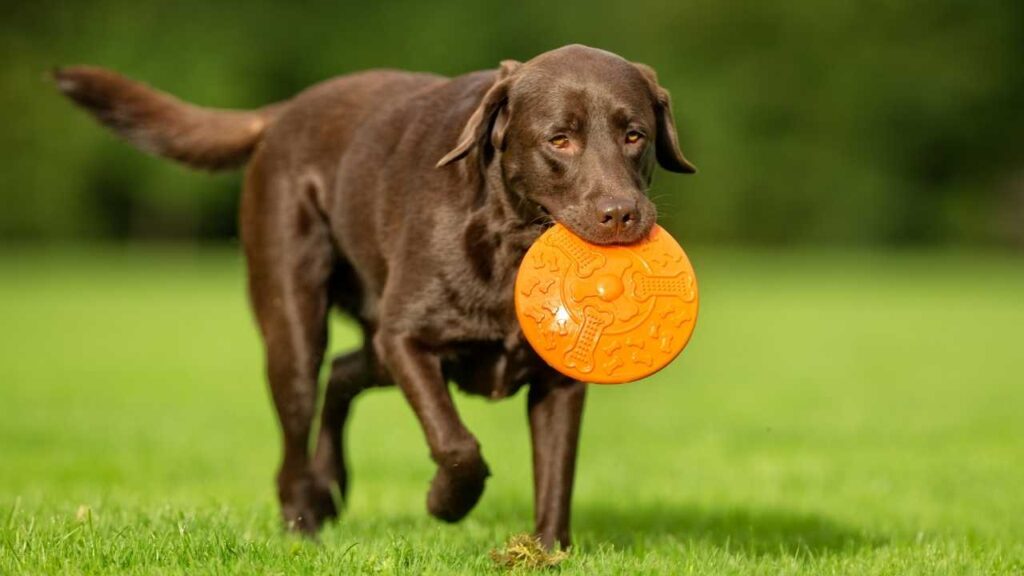
Temperament and Personality Traits
German Shepherd:
Hesitant with strangers
Loyal, caring, and fiercely protective
Affectionate, joyful, and filled with energy
One of the smartest dog breeds out there
Comes with a strong guarding instinct
This family dog struggles with separation anxiety when familiar faces are not around.
Labrador Retriever:
Don’t showcase dog aggression
Gentle and affectionate in nature
Devoted and highly motivated
Kind and playful
High energy levels
These sweet dogs are prone to develop obesity and hip dysplasia. Alongside this, dogs that live with families tend to get separation anxiety when they are left alone for long periods.
Bite Force and Mouth Behavior
With a bite force of around 238 PSI, as reported by The Kennel Club, the German Shepherd has one of the strongest bite forces in the dog world. Its mouth size and jaw shape are the defining features in this regard. However, as far as it’s about the mouthing behavior of these dogs, it can range from play-biting to serious aggression.
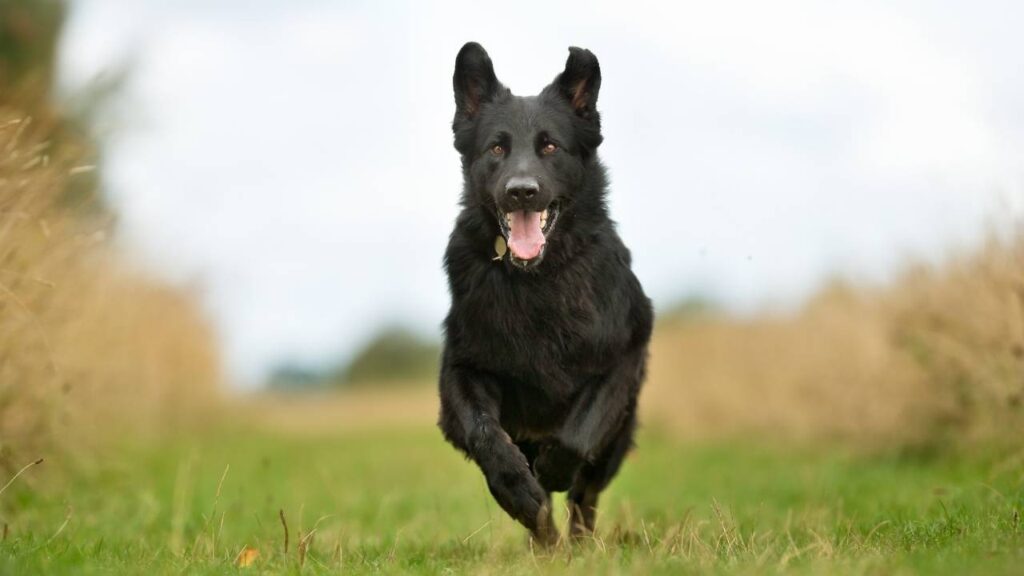
Labs have a bite force of 230 PSI. Compared to the GSD, it is a little less intense. Nonetheless, when compared to other dogs, it is still quite substantial. With the right kind of training, they can easily hold things softly without clamping them down. As puppies, they tend to showcase nipping behavior. It can, however, be managed with training.
This Quora question talks about the strength of a Lab’s bite force.
Health, Longevity, and Common Health Issues
Both Labrador and German Shepherd dogs have a healthy life; however, just like all other dogs, they may get some health problems as they age.
The GSD comes with a lifespan ranging around 7-10 years. Owing to their big size, they are prone to exercise-induced collapse. Proper care while taking them out for exercise sessions is necessary to avoid this problem.
Degenerative Myelopathy and Exocrine Pancreatic Insufficiency are also some diseases common in these dogs that require regular vet visits.
With an average lifespan of around 10-12 years, the Labs are considered to be healthy dogs. As these dogs grow and reach their senior ages, they are prone to developing hip and elbow joint disorders. If that happens, regular vet checks become mandatory.

Purina mentions they also have the tendency to gain weight. This is why their meals should be well-proportioned. These dogs are also prone to eye problems like progressive retinal atrophy. Early detection of serious health problems can really be a lifesaver!
Getting these dogs from a reputable breeder would minimize the chances of health concerns quite a lot.
Choosing the Right Breed for Your Lifestyle
Both of these dogs are popular family dogs. However, while picking one of them, make sure to make the decision according to your lifestyle and living habits.
If you are a first-time dog owner, the Labrador Retriever would be a better choice owing to its easy-going nature.
If you want a watchdog for your home, get your hands on a GSD, as it is territorial and barks to alert.
German Shepherds have high physical and mental stimulation needs when compared to the Labs. Hence, get them if you have an active lifestyle.
If you live in an apartment, get yourself a Lab as it has the tendency to adapt well to apartment life when compared to the GSD.
While Labs are more joyful, goofy, and fun-loving, the GSDs are known to be disciplined and focused.
Conclusion
GSDs and Labs are two breeds that are really popular amongst pet owners. They have distinct qualities that make them so likable amongst kids and adults. Where German Shepherds are excellent guard dogs, great service animals, and exceptional guide dogs, the Labs are wonderful police dogs when it comes to detection and investigation.
German shepherds tend to be more protective and better guard dogs; however, for a family with kids, the Lab is a great addition as it would fill the house with a lot of love and joy.


